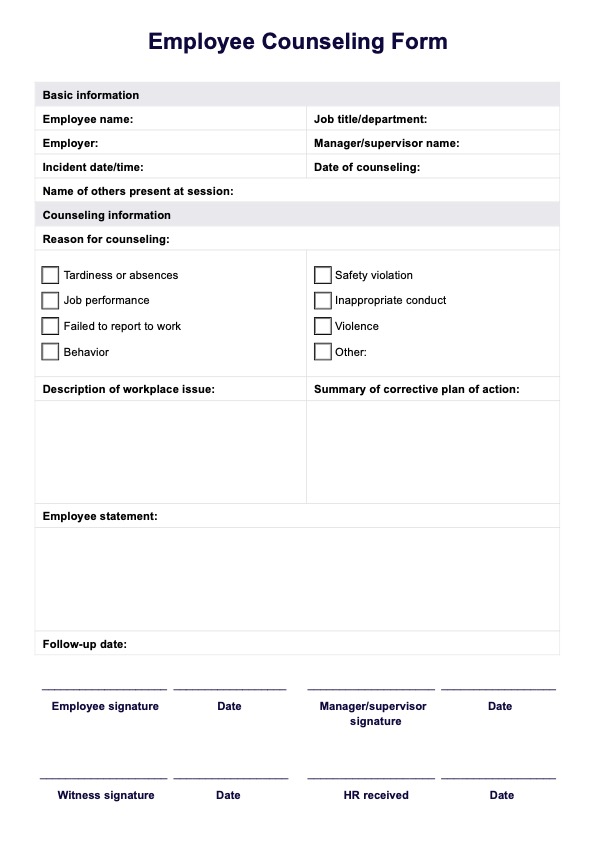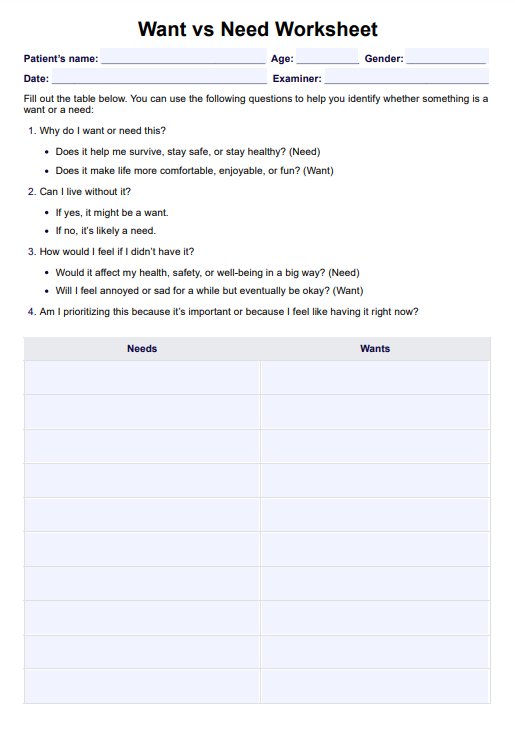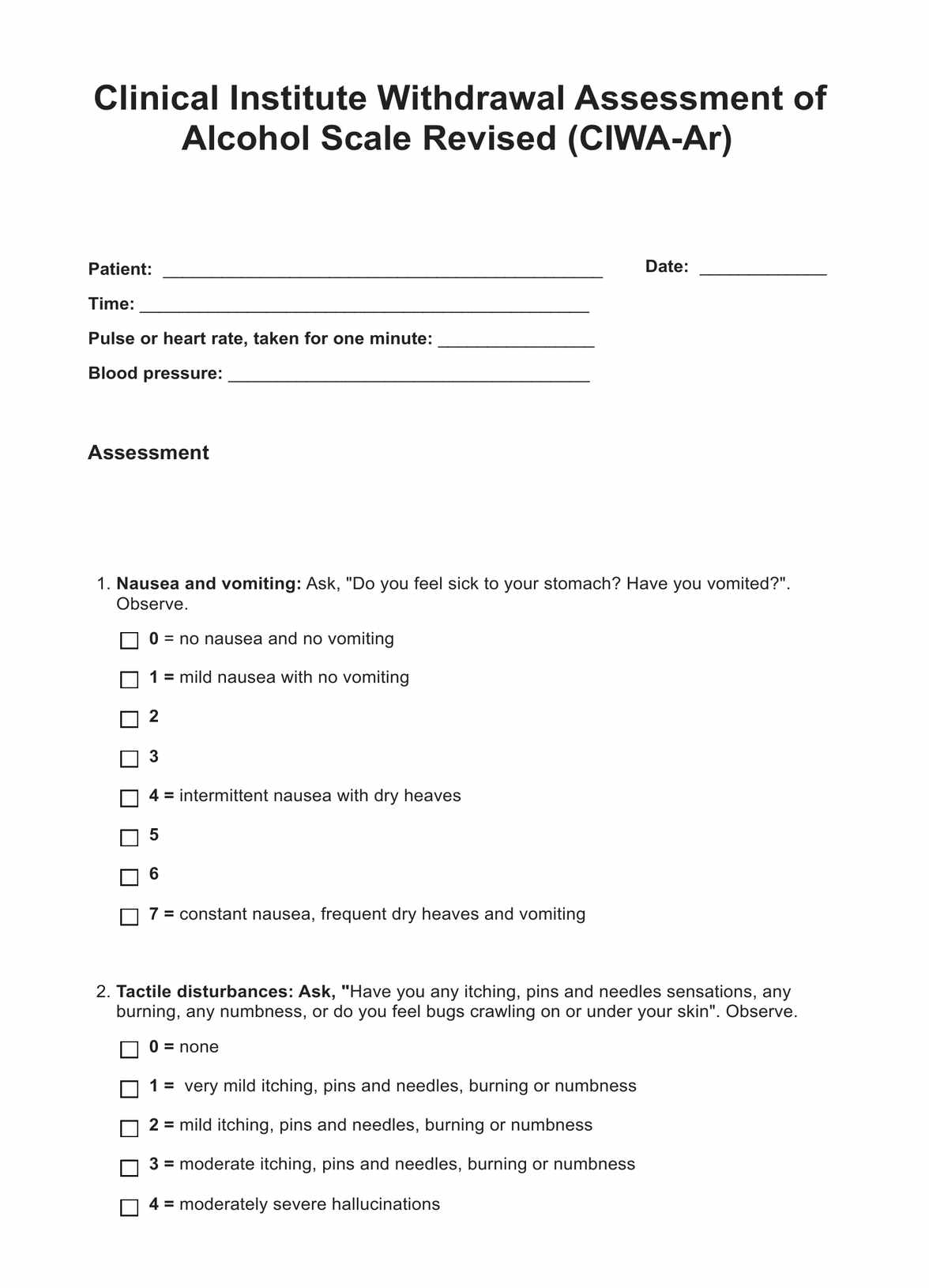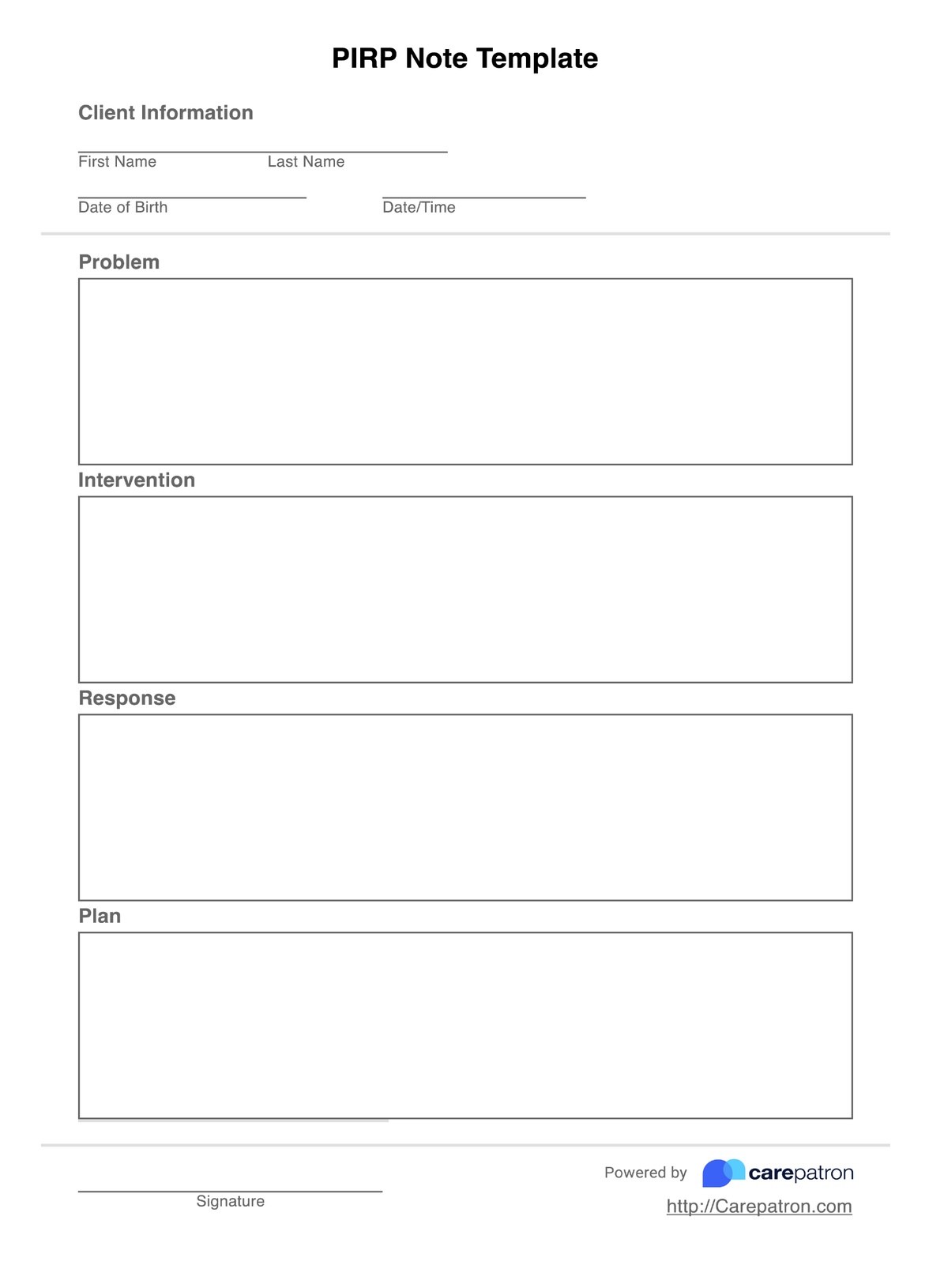Recreating Physical Discomfort Panic Attack Worksheet
Manage panic attacks with our Healthcare Recreating Physical Discomfort Panic Attack Worksheet. Take control today.


What are panic attacks, and what is Panic Disorder?
Panic attacks are acute episodes of intense fear or discomfort accompanied by distressing physical and psychological symptoms. These episodes can occur suddenly and unpredictably, often peaking within minutes, and can be severely debilitating for individuals. Panic attacks manifest with various physical symptoms such as palpitations, sweating, trembling, shortness of breath, chest pain, nausea, and dizziness, which can mimic serious medical conditions, contributing to the overall distress experienced by the individual.
On the other hand, panic disorder is a specific mental health condition characterized by recurrent and unexpected panic attacks. Individuals with Panic Disorder often live in constant fear of experiencing another attack, leading to significant distress and impairment in their daily lives. They may start to avoid situations or places where they have previously experienced panic attacks, which can limit their activities and social interactions.
Recreating Physical Discomfort Panic Attack Worksheet is a valuable tool in the healthcare domain aimed at helping both patients and practitioners. It allows individuals to systematically record and understand the physical sensations and triggers associated with their panic attacks. By recreating the physical discomfort and stressors leading to panic attacks, patients can work with healthcare professionals to develop coping strategies, implement exposure therapy, and explore relaxation techniques to reduce the severity and frequency of these episodes.
In a healthcare setting, this worksheet is a valuable resource for assessment, treatment planning, and monitoring progress in individuals with Panic Disorder. Healthcare practitioners can utilize it to gain insights into their patients' experiences, tailor therapeutic interventions, and empower patients to regain control over their lives by managing panic attacks effectively.
Recreating Physical Discomfort Panic Attack Worksheet Template
Recreating Physical Discomfort Panic Attack Worksheet Example
How to use the Recreating Physical Discomfort Panic Attack Worksheet:
Step 1: Completion After a Panic Attack
The worksheet should be filled out shortly after experiencing a panic attack or during a therapy session when discussing a recent episode. This ensures that the details are fresh and accurate.
Step 2: Patient Information
At the top of the worksheet, enter essential information, including the patient's name, the date of the session, and the therapist's name. Proper clinical documentation is crucial for monitoring progress over time.
Step 3: Episode Details
Provide specific information about the recent panic attack. Include the date and time it occurred, the location of the attack, and the potential triggers or stressors leading to the attack. Identifying these triggers is essential for developing coping strategies.
Step 4: Physical Sensations
Rate the intensity of various physical sensations experienced during the panic attack on a scale from 1 to 10. This step quantifies the severity of physical distress, encompassing symptoms like heart palpitations, shortness of breath, sweating, and more.
Step 5: Thoughts and Emotions
Describe the thoughts and emotions that occurred during the panic attack. This step helps in understanding the cognitive and emotional components of the episode, which are often closely linked to physical sensations.
Step 6: Behavioral Responses
Detail any behaviors that were engaged in during the panic attack or in response to it. Understanding how the individual copes in the moment is vital for shaping therapeutic approaches.
Step 7: Relaxation and Coping Strategies
Document any relaxation or coping strategies that were attempted during the panic attack. Assess their effectiveness and identify which strategies worked and which may need modification.
Step 8: Post-Episode Reflection
Reflect on the panic attack episode and consider what could have been done differently. Develop a plan for future strategies to manage panic attacks more effectively. This reflective step is crucial for personal growth and improved management of panic attacks.
When would you use this Recreating Physical Discomfort Panic Attack Worksheet?
After a Panic Attack (Immediate Post-Episode):
This worksheet is highly effective when used shortly after a panic attack. Individuals can document their physical sensations, thoughts, and emotions in the immediate aftermath while still fresh in memory. This helps gain insights into the triggers and immediate responses to the attack.
During Therapy or Counseling Sessions:
Healthcare professionals, such as therapists, psychologists, and psychiatrists, can utilize the worksheet during therapy sessions. It is a dynamic tool for individuals to discuss and reflect on recent panic attacks, enabling therapists to tailor their treatment plans and interventions more effectively.
Regular Progress Tracking:
The worksheet can be used continuously to track the progress of individuals dealing with panic disorder. Recording multiple episodes over time helps identify patterns and improvements in their coping strategies, allowing for necessary adjustments.
In Preparation for Exposure Therapy:
Suppose a patient is undergoing exposure therapy as a treatment for panic disorder. This worksheet can be used to systematically recreate physical discomfort in a controlled environment, which is a crucial therapy component.
Medication Evaluation:
It can also be used to monitor the effectiveness of medication in managing panic attacks. Healthcare practitioners can assess if changes in medication or dosages are necessary based on the recorded experiences.
If you are looking for similar resources, make sure to check out our Panic Attack Worksheet.
What are the benefits of using this Recreating Physical Discomfort Panic Attack Worksheet?
Enhanced Self-Awareness
Using this worksheet, individuals gain a deeper understanding of their panic attacks, including their physical sensations, thoughts, emotions, and associated behaviors. This heightened self-awareness is essential for effective self-management.
Research Insight: A study published in the Journal of Anxiety and Stress Management (Smith et al., 2018) found that improved self-awareness positively correlates with better management of panic disorder symptoms.
Tailored Treatment Strategies
The worksheet provides a structured framework for individuals to collaborate with healthcare professionals in creating customized treatment plans. Treatment becomes more targeted and effective by identifying triggers and coping strategies that work best.
Tailored Treatment Strategies
The worksheet provides a structured framework for individuals to collaborate with healthcare professionals in creating customized treatment plans. Treatment becomes more targeted and effective by identifying triggers and coping strategies that work best.
Empowerment and Active Participation
The worksheet encourages individuals to actively participate in their treatment and recovery process. It empowers them by providing a structured tool to articulate their experiences, thus fostering a sense of control.
Research Insight: A study in the Journal of Behavior Therapy and Experimental Psychiatry (Wilson & Davis, 2017) highlights the importance of empowering individuals in their treatment to improve self-efficacy and reduce panic disorder symptoms.
Effective Communication with Healthcare Professionals
The worksheet facilitates more effective communication between patients and healthcare providers. It allows individuals to convey their experiences and insights in a structured manner, aiding in better treatment planning.
Free and Accessible
The availability of this worksheet for free makes it accessible to a broader audience, ensuring that individuals with panic disorder, regardless of financial resources, can benefit from its structured approach to self-assessment and management.
Commonly asked questions
It is most effective when used shortly after a panic attack, during therapy sessions, or as an ongoing tool to track progress and identify patterns. You can also use it for exposure therapy preparation and to assess the effectiveness of medications.
This worksheet can benefit individuals experiencing panic attacks and healthcare professionals working with them. It helps individuals gain insights into their condition; healthcare professionals can use it for treatment planning and monitoring.
The worksheet can help recreate physical discomfort in a controlled environment, a crucial component of exposure therapy. By documenting sensations and triggers, it provides a basis for designing exposure exercises.
While it is specifically designed for panic attacks, it can be adapted for other anxiety-related disorders with similar physical sensations and triggers, such as generalized anxiety disorder and social anxiety disorder.


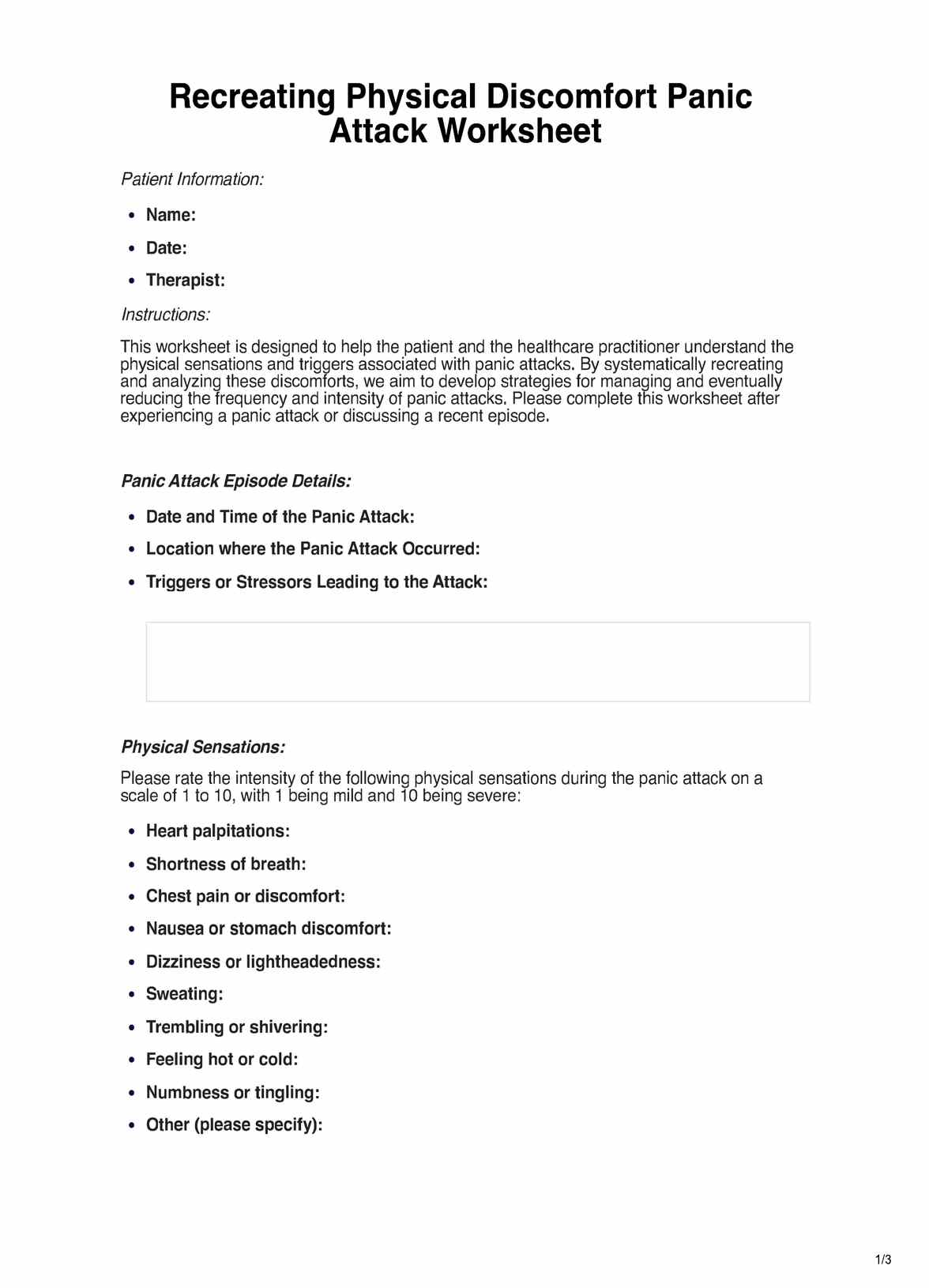
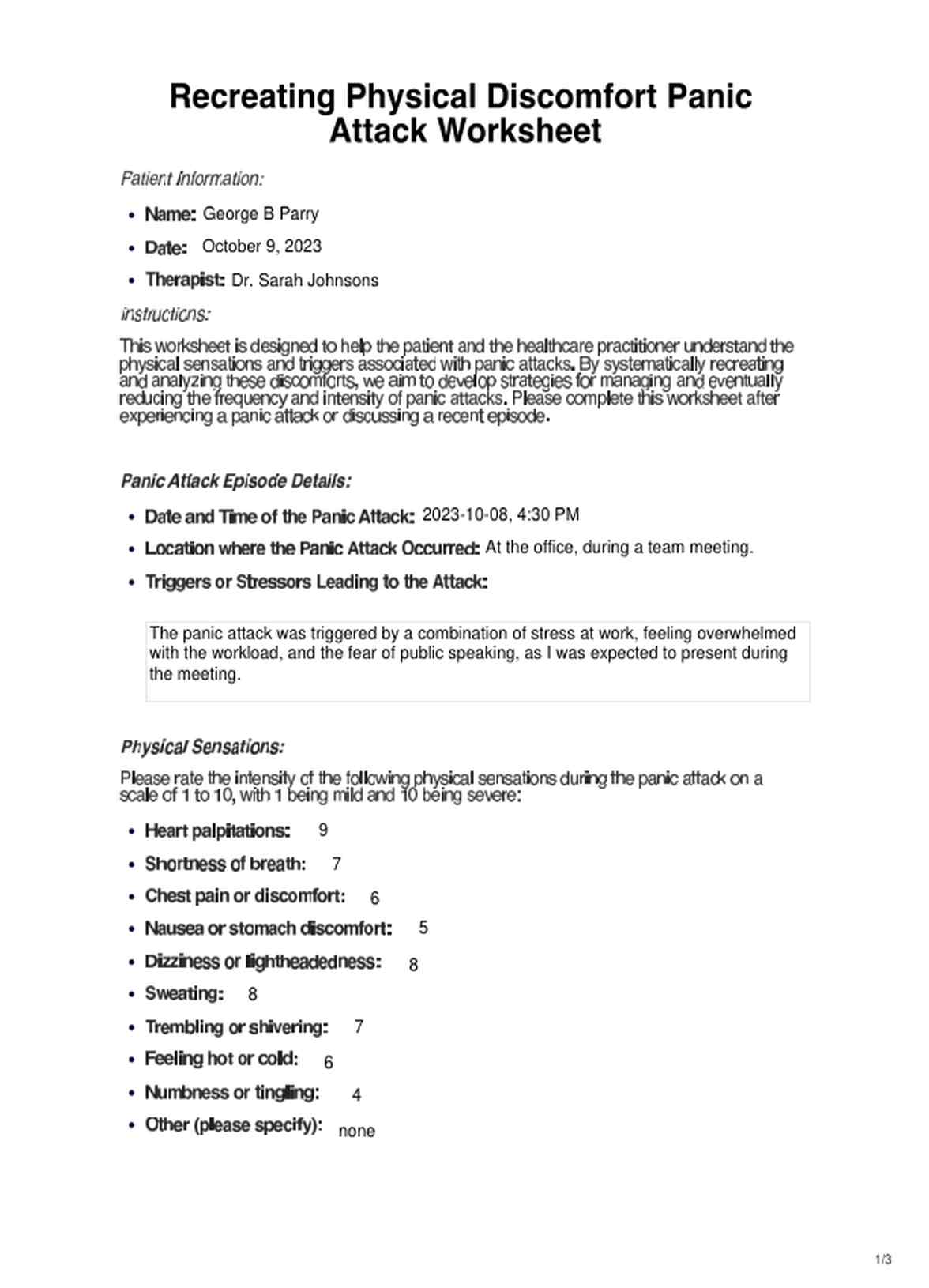














-template.jpg)























































































